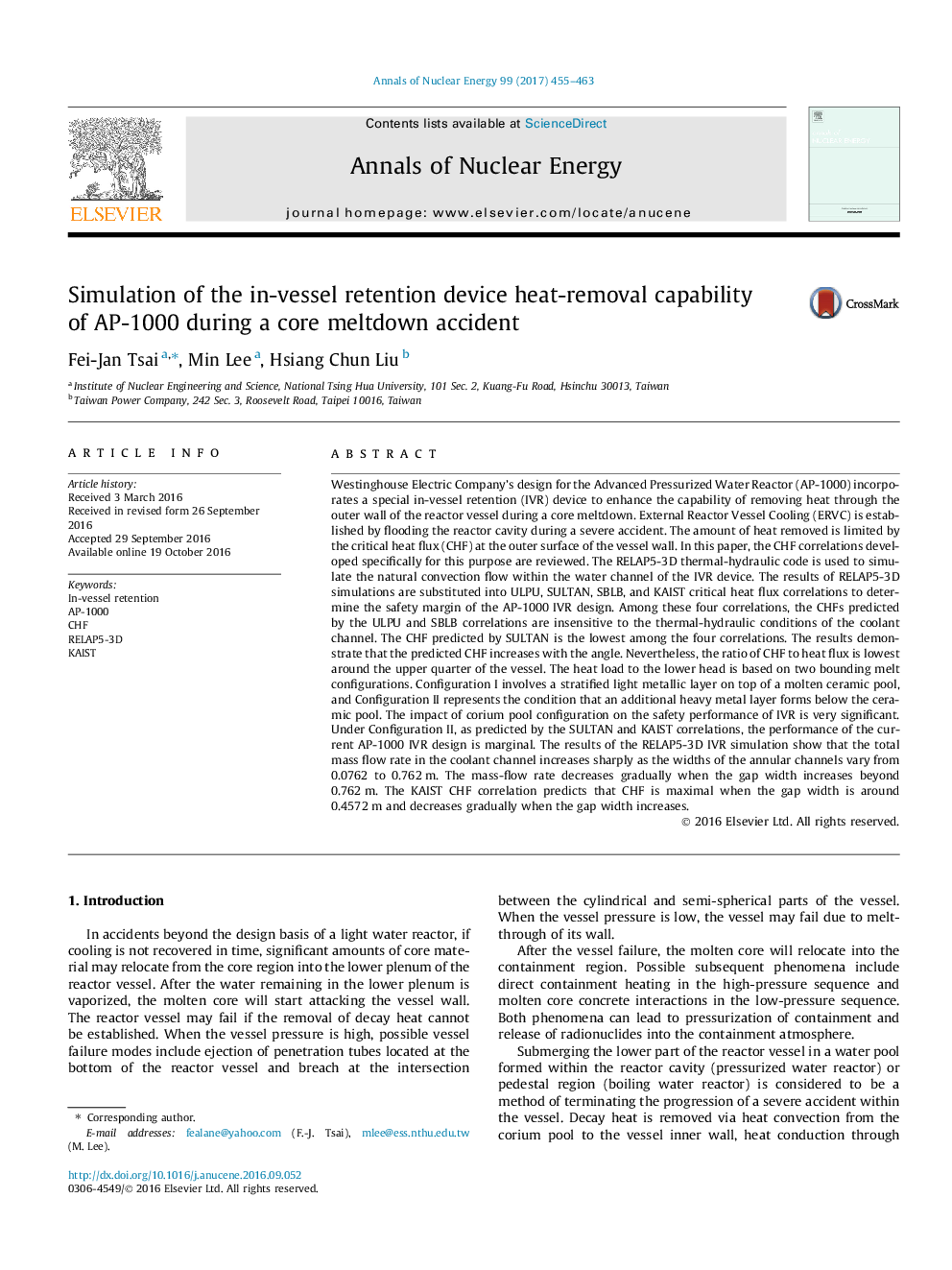| کد مقاله | کد نشریه | سال انتشار | مقاله انگلیسی | نسخه تمام متن |
|---|---|---|---|---|
| 8067444 | 1521098 | 2017 | 9 صفحه PDF | دانلود رایگان |
عنوان انگلیسی مقاله ISI
Simulation of the in-vessel retention device heat-removal capability of AP-1000 during a core meltdown accident
دانلود مقاله + سفارش ترجمه
دانلود مقاله ISI انگلیسی
رایگان برای ایرانیان
موضوعات مرتبط
مهندسی و علوم پایه
مهندسی انرژی
مهندسی انرژی و فناوری های برق
پیش نمایش صفحه اول مقاله

چکیده انگلیسی
Westinghouse Electric Company's design for the Advanced Pressurized Water Reactor (AP-1000) incorporates a special in-vessel retention (IVR) device to enhance the capability of removing heat through the outer wall of the reactor vessel during a core meltdown. External Reactor Vessel Cooling (ERVC) is established by flooding the reactor cavity during a severe accident. The amount of heat removed is limited by the critical heat flux (CHF) at the outer surface of the vessel wall. In this paper, the CHF correlations developed specifically for this purpose are reviewed. The RELAP5-3D thermal-hydraulic code is used to simulate the natural convection flow within the water channel of the IVR device. The results of RELAP5-3D simulations are substituted into ULPU, SULTAN, SBLB, and KAIST critical heat flux correlations to determine the safety margin of the AP-1000 IVR design. Among these four correlations, the CHFs predicted by the ULPU and SBLB correlations are insensitive to the thermal-hydraulic conditions of the coolant channel. The CHF predicted by SULTAN is the lowest among the four correlations. The results demonstrate that the predicted CHF increases with the angle. Nevertheless, the ratio of CHF to heat flux is lowest around the upper quarter of the vessel. The heat load to the lower head is based on two bounding melt configurations. Configuration I involves a stratified light metallic layer on top of a molten ceramic pool, and Configuration II represents the condition that an additional heavy metal layer forms below the ceramic pool. The impact of corium pool configuration on the safety performance of IVR is very significant. Under Configuration II, as predicted by the SULTAN and KAIST correlations, the performance of the current AP-1000 IVR design is marginal. The results of the RELAP5-3D IVR simulation show that the total mass flow rate in the coolant channel increases sharply as the widths of the annular channels vary from 0.0762 to 0.762Â m. The mass-flow rate decreases gradually when the gap width increases beyond 0.762Â m. The KAIST CHF correlation predicts that CHF is maximal when the gap width is around 0.4572Â m and decreases gradually when the gap width increases.
ناشر
Database: Elsevier - ScienceDirect (ساینس دایرکت)
Journal: Annals of Nuclear Energy - Volume 99, January 2017, Pages 455-463
Journal: Annals of Nuclear Energy - Volume 99, January 2017, Pages 455-463
نویسندگان
Fei-Jan Tsai, Min Lee, Hsiang Chun Liu,